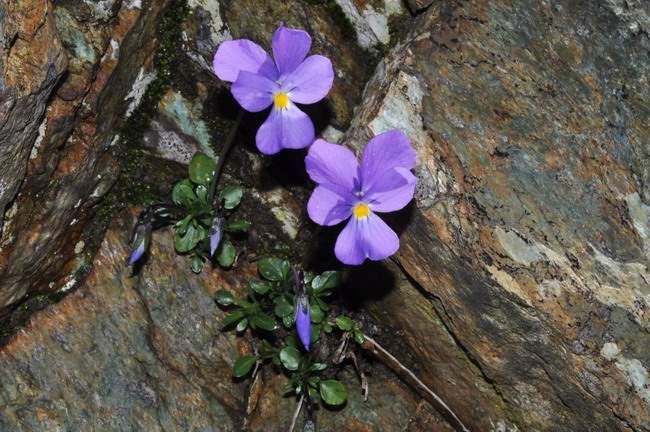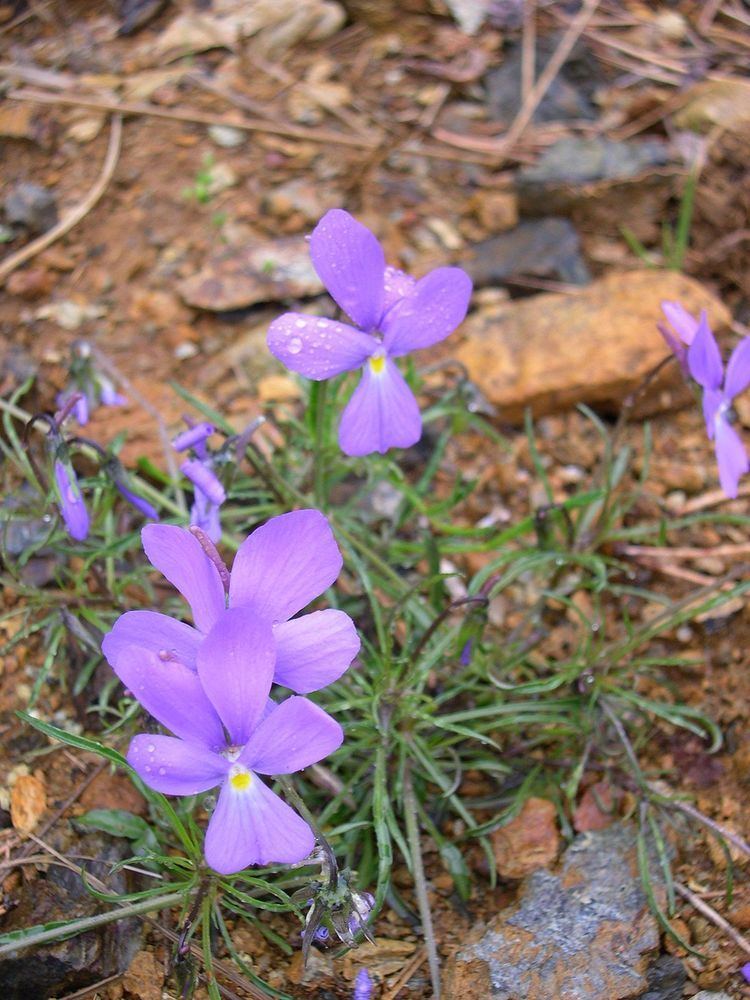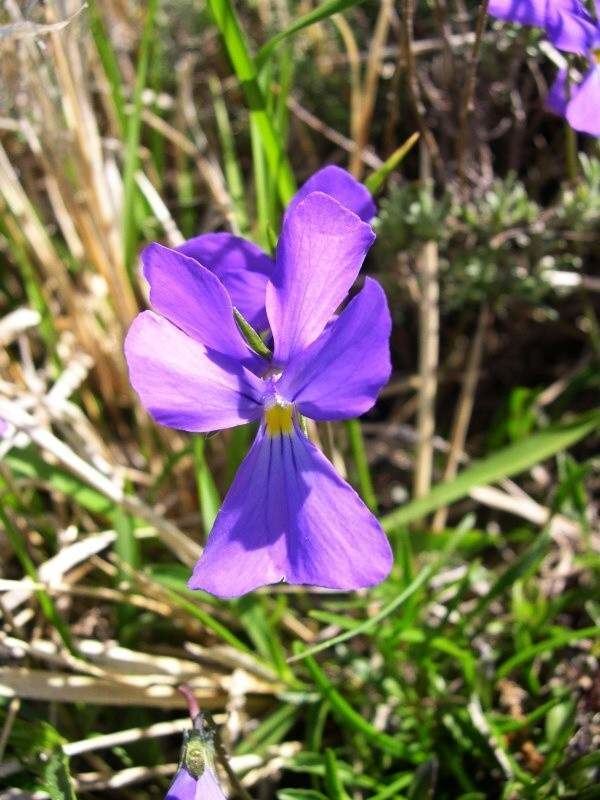Rank Species | ||
Similar Viola arborescens, Viola cenisia, Viola corsica, Viola pinnata, Viola aethnensis | ||
Viola bertolonii is a species of violet known by the common name Bertoloni's pansy, belonging to the Violaceae family.
Contents

Etymology
The genus name, derived from the Latin word “viere” meaning “to tie”, possibly refers to the flexuosity of these plants. The species epithet honors the Italian botanist Antonio Bertoloni (1775–1869).
Description

The biological form of Viola bertolonii is hemicryptophyte scapose, as its overwintering buds are situated just below the soil surface and the floral axis is more or less erect with a few leaves. It has a particularly low chromosome number (2n = 20) and possibly dates back to the late Tertiary.

Viola bertolonii is a rare herbaceous perennial plant with a prostrate-ascending stem about 5–15 centimetres (2.0–5.9 in) high. The basal leaves are small, from round to oval, with an elongated petiole, while the upper leaves are linear and narrow, with pinnate stipules. The large blue-violet flowers have a corolla of about 2–4 centimetres (0.79–1.57 in) wide. The flowering period extends from April through June.
Distribution

It is an endemic with a quite restricted distribution range. It is only present in south eastern France (possibly) and in north western Italy, in the Apennines of Liguria (Regional Park of Monte Beigua, Piani di Praglia, Monte Pracaban, Monte Leco, Punta Martin) and Piedmont (Natural Park of Capanne di Marcarolo).
Habitat

The species is strictly associated with ultramafic serpentine substrates. It grows on ophiolites in mountain environments in meadows and rocky slopes, at an altitude of 600–1,000 metres (2,000–3,300 ft) above sea level.
